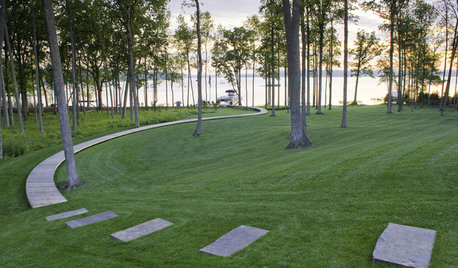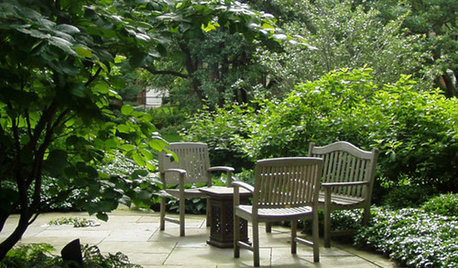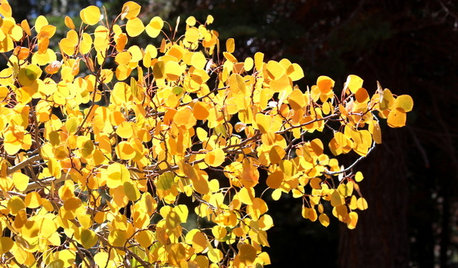How can I make my lawn look as good as the new turf?
andrew700andrew
9 years ago
Related Stories

GARDENING GUIDESHow to Fix Bare and Yellow Lawn Spots
Restore your turf’s good looks by reseeding unsightly patches
Full Story
GARDENING GUIDESGive Your Turf the Fall Tune-up It Deserves
Treat your battered lawn to a little TLC this fall, and it will reward you with lush, healthy grass come spring
Full Story
GARDENING AND LANDSCAPINGYour Yard: Are You Ready to Lose the Lawn?
Save time and water with good-looking alternatives to turf grass
Full Story
LANDSCAPE DESIGN15 Great Ideas for a Lawn-Free Yard
End the turf war for good with hardscaping, native grasses and ground covers that save water and are easier to maintain
Full Story
LIVING ROOMSIdeabook 911: How Can I Make My Living Room Seem Bigger?
10 Ways to Make a Small Space Live Large
Full Story
LANDSCAPE DESIGNGreat Design Plant: Quaking Aspen for 3-Season Beauty — on Its Own Turf
It offers bright fall foliage, snowy winter bark and lush green leaves in summer. Just don't try to plant quaking aspen away from its home
Full Story
MOST POPULARMeet a Lawn Alternative That Works Wonders
Carex can replace turfgrass in any spot, is low maintenance and adjusts easily. Add its good looks and you’ve got a ground cover winner
Full Story
LIFEYou Said It: ‘The Wrong Sink Can Make You Hate Your Kitchen’
Design advice, inspiration and observations that struck a chord this week
Full Story
SAVING WATERHouzz Call: Are You Letting Go of Your Lawn?
Many facing a drought are swapping turf for less thirsty plantings. If you’re one of them, we’d like to hear about it
Full Story
BEFORE AND AFTERSSee 6 Yards Transformed by Losing Their Lawns
Wondering whether a turf lawn is the best use of your outdoor space? These homeowners did, and they found creative alternatives
Full Story







yardtractor1
ken_adrian Adrian MI cold Z5
Related Professionals
Tempe Landscape Architects & Landscape Designers · Saint Louis Park Landscape Architects & Landscape Designers · Allentown Landscape Contractors · Clark Landscape Contractors · Del Aire Landscape Contractors · Fort Atkinson Landscape Contractors · Fort Worth Landscape Contractors · Hickory Hills Landscape Contractors · Old Saybrook Landscape Contractors · Ronkonkoma Landscape Contractors · Markham Landscape Contractors · Silver Firs Landscape Contractors · Vadnais Heights Landscape Contractors · Jericho Swimming Pool Builders · Ontario Swimming Pool Buildersandrew700andrewOriginal Author
dchall_san_antonio
andrew700andrewOriginal Author
dchall_san_antonio
morpheuspa (6B/7A, E. PA)
yardtractor1
andrew700andrewOriginal Author
andrew700andrewOriginal Author
davemcmkiii
andrew700andrewOriginal Author
yardtractor1
morpheuspa (6B/7A, E. PA)
andrew700andrewOriginal Author
morpheuspa (6B/7A, E. PA)
dchall_san_antonio
davemcmkiii
davemcmkiii